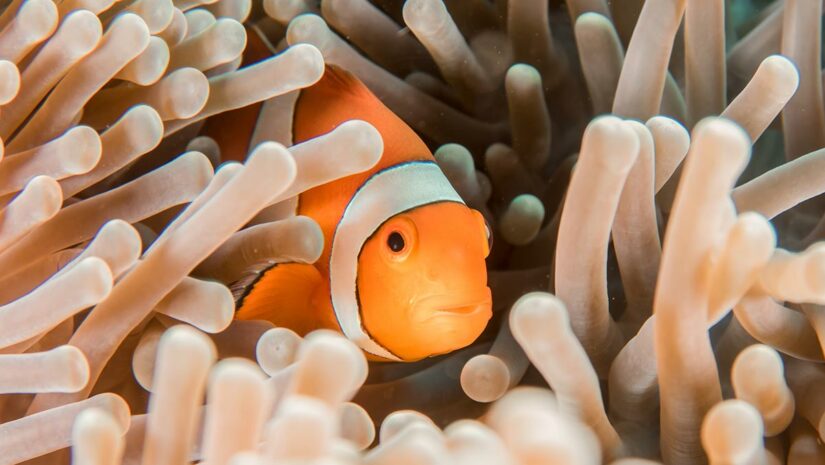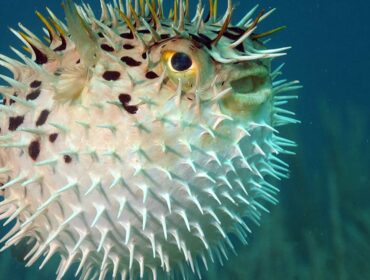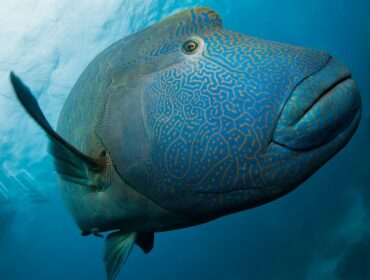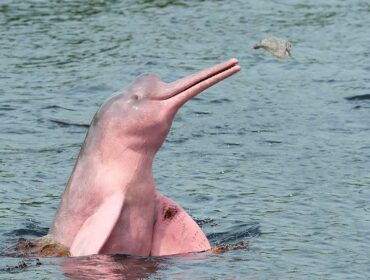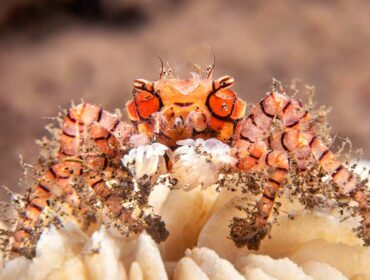The 2004 Disney animated film Finding Nemo features more than 50 species of marine animals, including fish, cetaceans, seabirds, and invertebrates, making it a wonderful educational tool for youngsters that are not yet aware of the complexities of biodiversity while also appealing to more mature minds. We especially enjoy how the different characters in the story seem to tap into the actual behavioral traits of the species they play, expanding on them to make them funny and more relatable to a human audience. We thought it would be fun to introduce you to some of the real cast of Finding Nemo, just to add a little extra depth to the movie the next time you watch it.
Finding Nemo was so popular when it first released, that even today most people look at the clownfish in an aquarium and identify it as “Nemo” and not as a Clownfish. At first people thought the phenomenon would pass, and the interest generated by the movie would fade away. However even today most Scuba diving instructors will tell you that their new students still recognize reef fish by their Nemo names, and phrases like: “I saw two Dory’s and a whole bunch of Gills”, or “Did you see Nemo in that anemone?”, are not uncommon.
Below, we decided to help our Nemo-loving fans find Nemo and his friends.
Finding Nemo Fish in Real Life
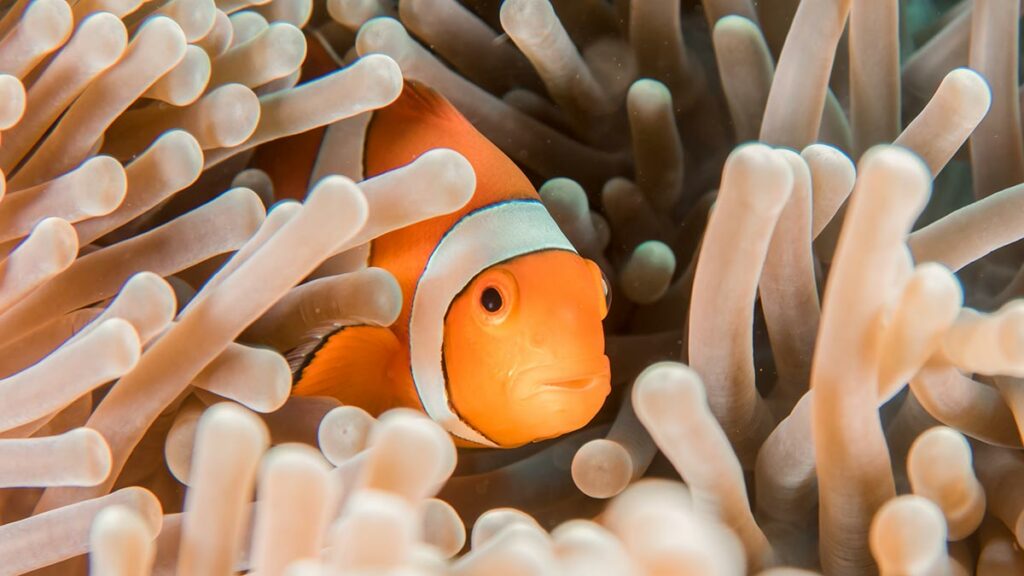
Clownfish: “Marlin”, “Coral”, “Nemo”
False Ocellaris Clownfish are closely related to the true clownfish better known as the orange clown fish and are both species that are found in coral reefs of the Indo-Pacific. The Ocellaris — which is the species of Marlin, Coral, and Nemo — can be recognized by its orange color with three white bars and black markings on the fins and you will almost always find them living in the protection of an anemone.
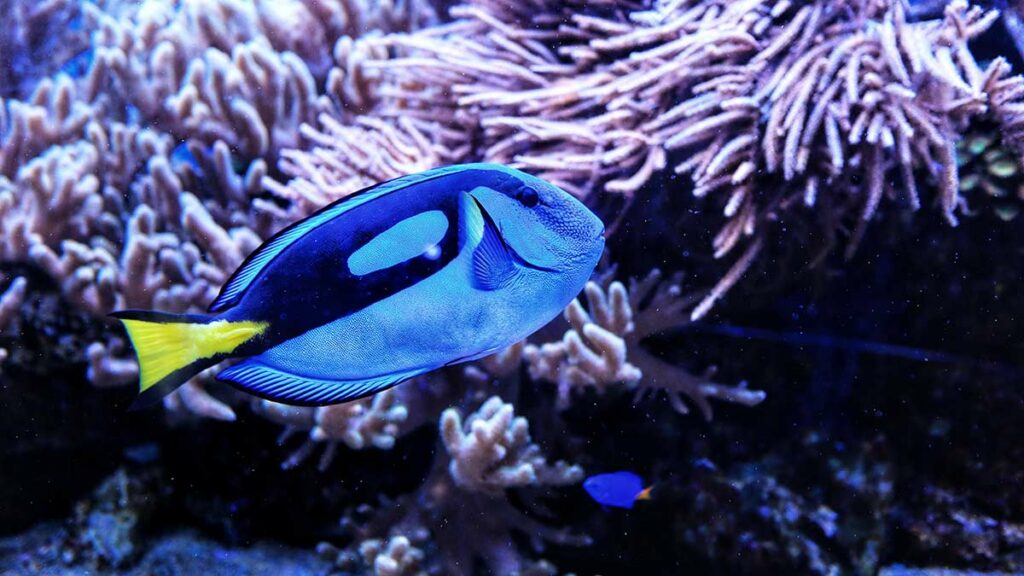
Regal Tang: “Dory”
The Regal Blue Tang, Dory in Finding Nemo, comes from the family of surgeon fish and can be identified by its royal blue body, yellow tail, and black “palette” design. This species is relatively common in the reefs of the Indo-Pacific and lives of plankton. Tangs can grow up to a foot in length and due to their stunning color, are a real delight to spot while diving in a reef.
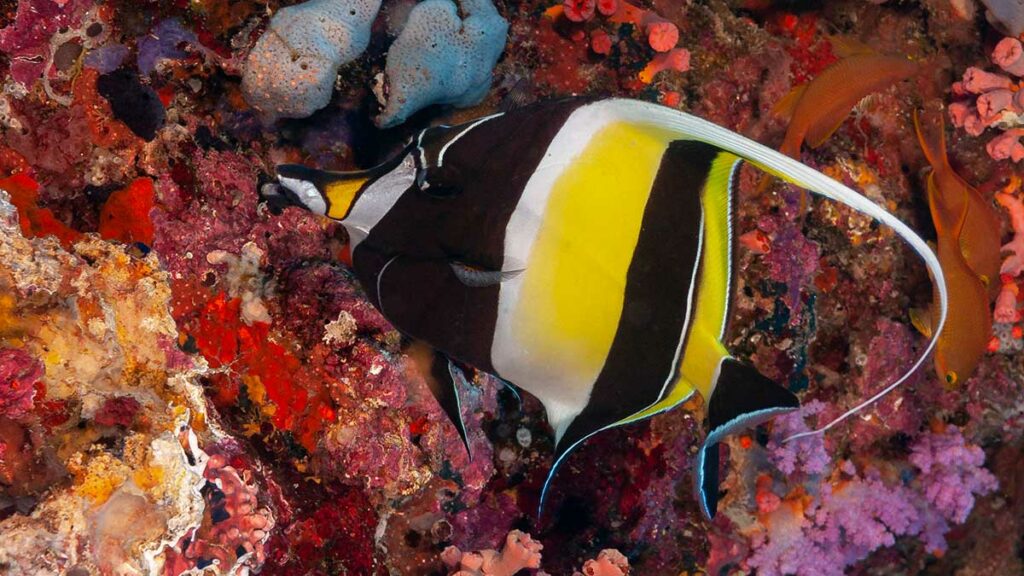
Moorish Idol: “Gill”
Another really popular character from the movie, Gill is a Moorish idol which is often mistakenly identified as a butterflyfish, angelfish, bannerfish, or pennant fish, which appear in similar colors. The pennant coral fish closely resembles the Moorish idol, which can be distinguished from the pennant by the black band that goes over its eye and its distinctive tubular snout that sets it apart. The Moorish Idol however belongs to the Surgeonfish family and grows to a length of 8-10 inches.
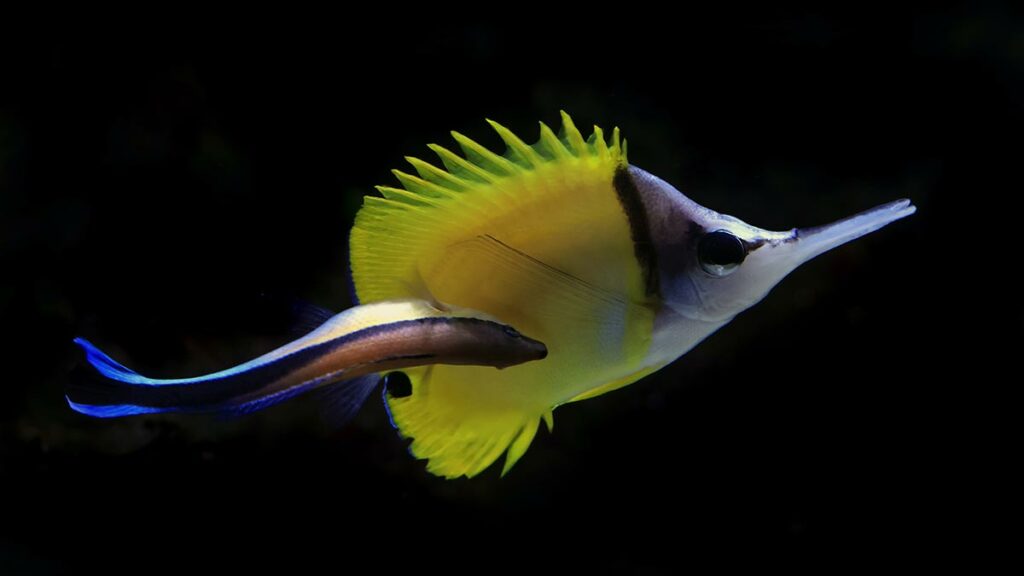
Yellow Longnose Butterflyfish: “Tad”, “Bill”
The yellow longnose butterflyfish is one of the most common kinds of butterfly fish and is instantly recognized by its bright yellow body and tapering short black nose. The Yellow Longnose Butterflyfish inhabits the Indo-Pacific and Eastern Pacific and any scuba diver who has dived in Hawaii will instantly recognize this fish. They are commonly found on exposed seaward reefs and not very common in lagoon reefs.
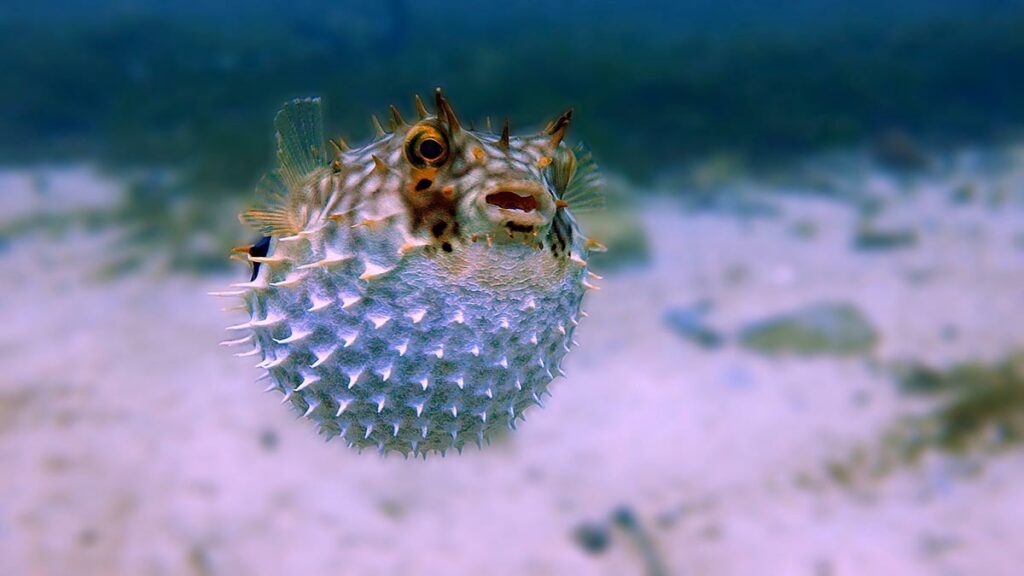
Pufferfish: “Bloat”
Pufferfish are by far one of the most extraordinary fish of the reef. When stressed, pufferfish can puff up to two or three times their normal size. They are slow-swimming fish, and swim rather awkwardly in the water. There are also several kinds of pufferfish, including boxfish, cowfish, porcupine, burrfish, stars and stripes puffer, the dog faced puffer, the figure eight puffer, etc. Bloat in Finding Nemo is a Porcupine Pufferfish recognizable by its yellow color and long spines which sticks out when it inflates.
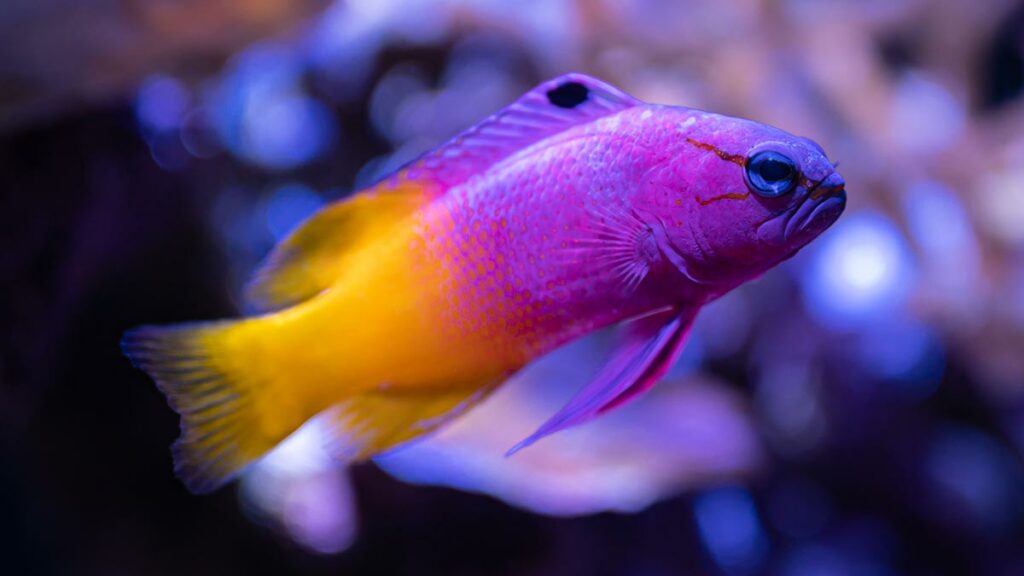
Royal Gramma: “Gurgle”
The Royal Gramma is one of the most colorful and vibrant tropical fish. This fish grows to about 3 inches long and lives in the western Atlantic Ocean waters, but can also be kept in aquariums (like Gurgle in the movie). Though tiny, their purple and yellow colors immediately draw attention.
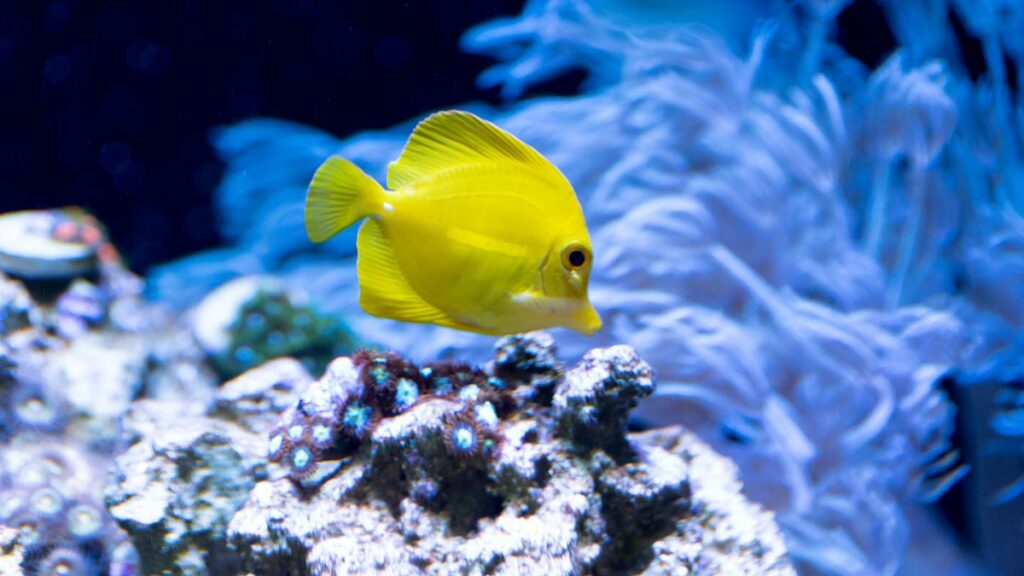
Yellow Tang: “Bubbles”
The Yellow Tang is a bright and distinct yellow fish, and a relative to the Regal Tang (Dory). In Finding Nemo, Bubbles is the Yellow Tang fish, and has a long snout and does show aggression, so take caution when adding to an aquarium environment. While its scales shine bright yellow during the day, the Yellow Tang develops brown patches in the middle of its body and shows a white stripe at nighttime.
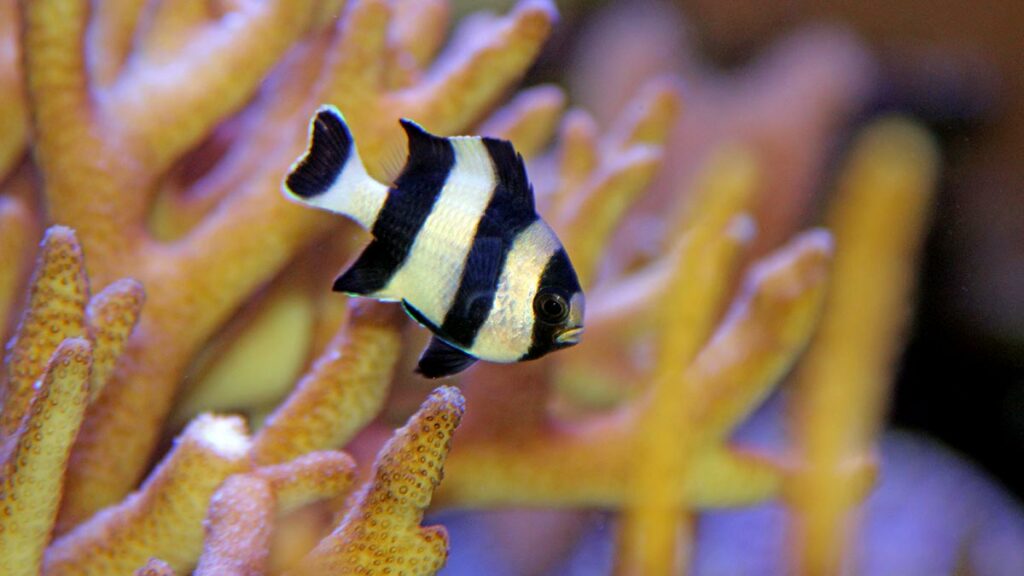
Four-Stripe Damselfish: “Deb”
Also known as a blacktail dascyllus, a four-stripe damselfish appears in Finding Nemo as Deb. As its name suggests, this fish has four black stripes running vertically down its body — three stripes on the body, and the final one on the tail. While it only grows to about 3 inches in length, this damselfish shows signs of aggression so should only live in a tank with similarly-behaved fish.
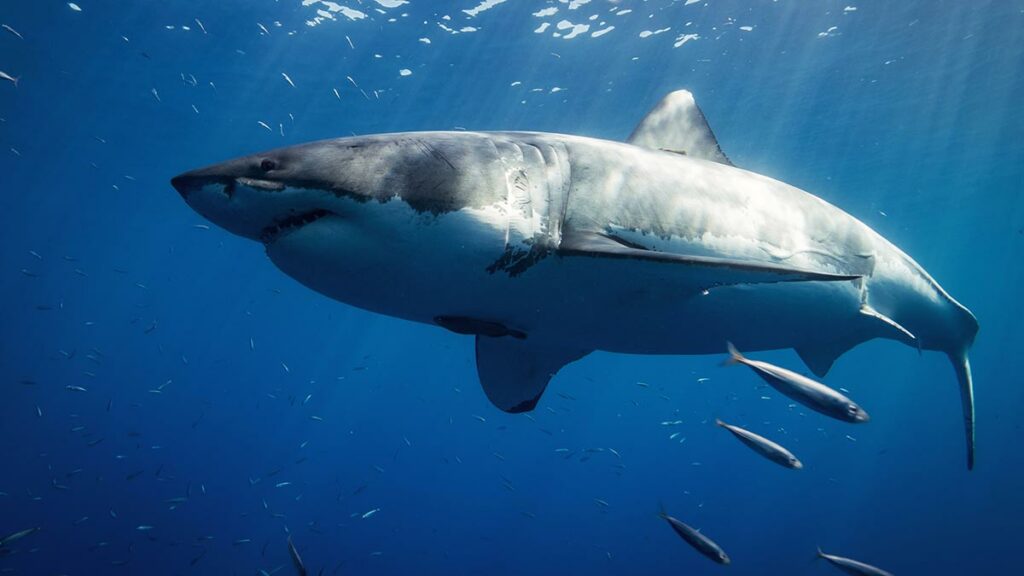
Great White Shark: “Bruce”
Famous for his line, “Fish are friends, not food,” Bruce is a great white shark in Finding Nemo. As a leader of the Fish-Friendly Sharks in the movie, the movie character fights many of its natural instincts. In real life, great whites avoid eating small fish and rather consume seals and sea lions — more nutritious options.
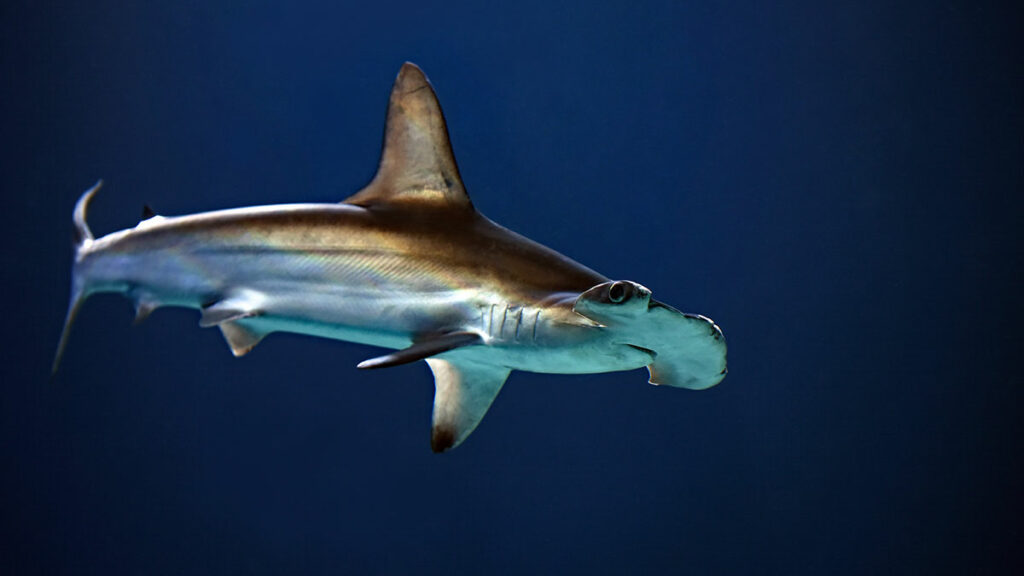
Hammerhead Shark: “Anchor”
The hammerhead shark is an odd-looking species. Anchor, one of Bruce’s friends in the Fish-Friendly Sharks group in Finding Nemo, is a hammerhead shark. In reality, there are nine different species of the hammerhead, and tend to live around coastlines. These carnivorous sharks consume fish, squid, octopus, and stingrays, using their head to corner and pin down their prey.
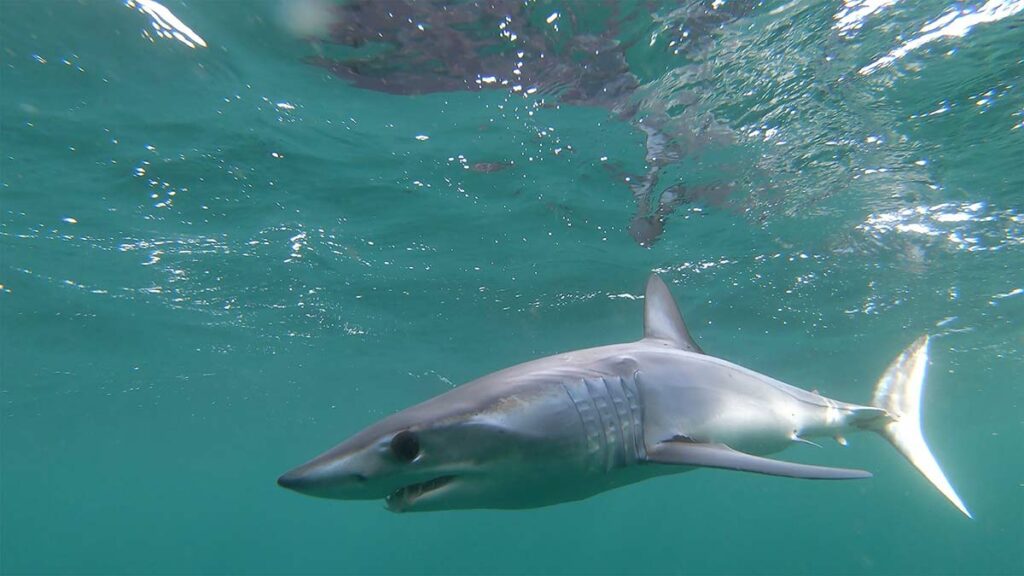
Mako Shark: “Chum”
Finding Nemo‘s Chum is a mako shark. A type of mackerel shark, the mako is also the fastest known species of shark, and can reach speeds of nearly 30 miles per hour. This type of shark lives in both tropical and temperate waters, and can be both shortfin and longfin. Their diet consists mainly of fish, and recent news stories have reported mako sharks leaping onto fishing boats in New Zealand.
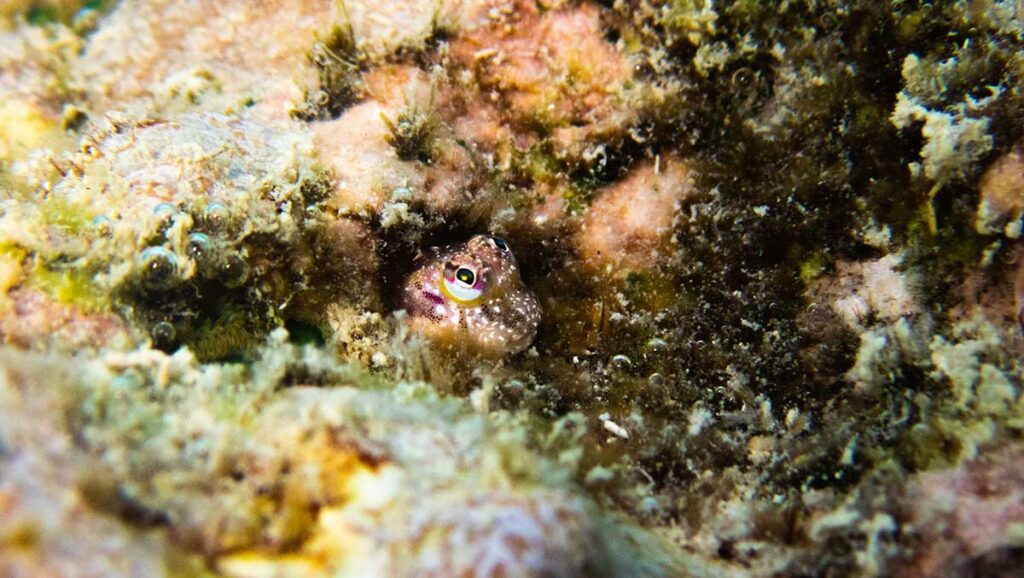
Blenny: “Blenny”
Of all the fish in the movie, you’ll instantly recognize Blenny, an appropriately-named blenny fish. There are hundreds of species of blenny, and they feature venomous fangs, large eyes, and love to reside in caves.
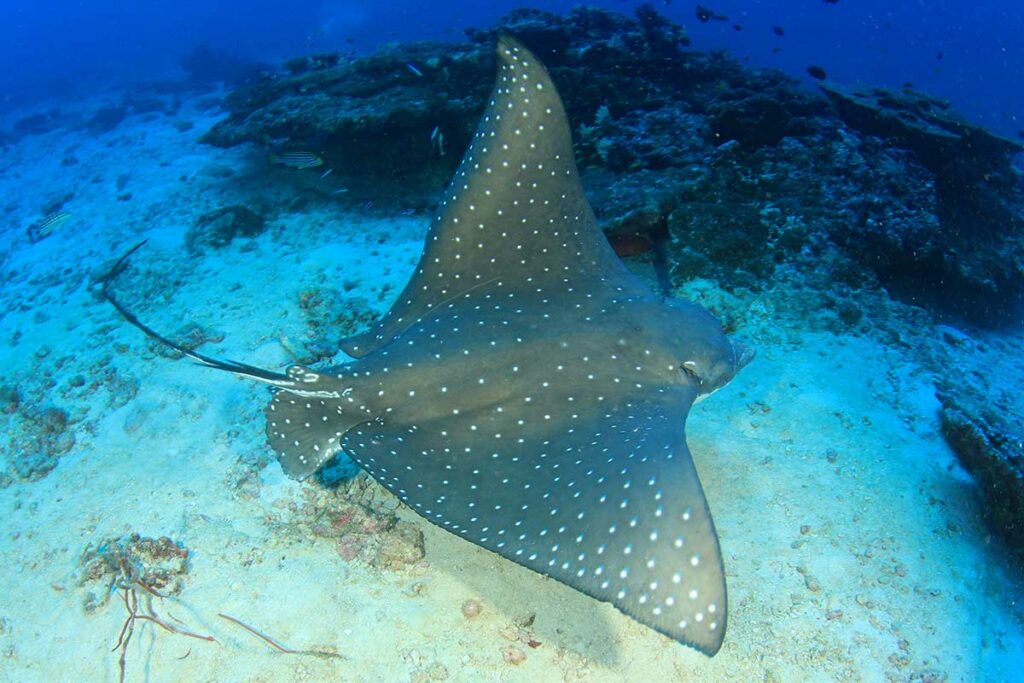
Spotted Eagle Ray: “Mr. Ray”
Mr. Ray, Nemo’s school teacher, is a spotted eagle ray. This type of ray has a darker body spotted with white dots. Its long and slim tail has a recognizable spine and it has a wide wingspan, often reaching upwards of 11 feet in distance! The spotted eagle ray weighs 500 pounds (or more) and can even leap from the water. Its diet consists of mollusks and crabs and it can burrow into the ocean floor to find additional foods.
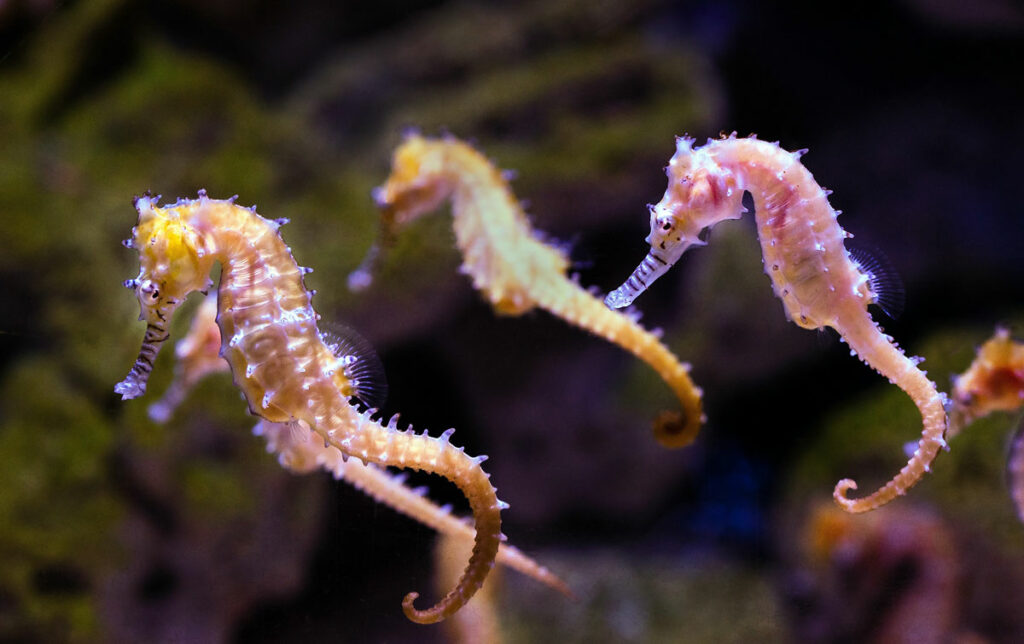
Seahorse: “Sheldon”, “Bob”
Bob and Sheldon, a father-son duo in Finding Nemo, are seahorses. These instantly recognizable underwater equines camouflage supremely well and can grow up to 14 inches (and as little as half an inch). Of course, famous seahorse facts include that male seahorses have babies, and that they mate for life.
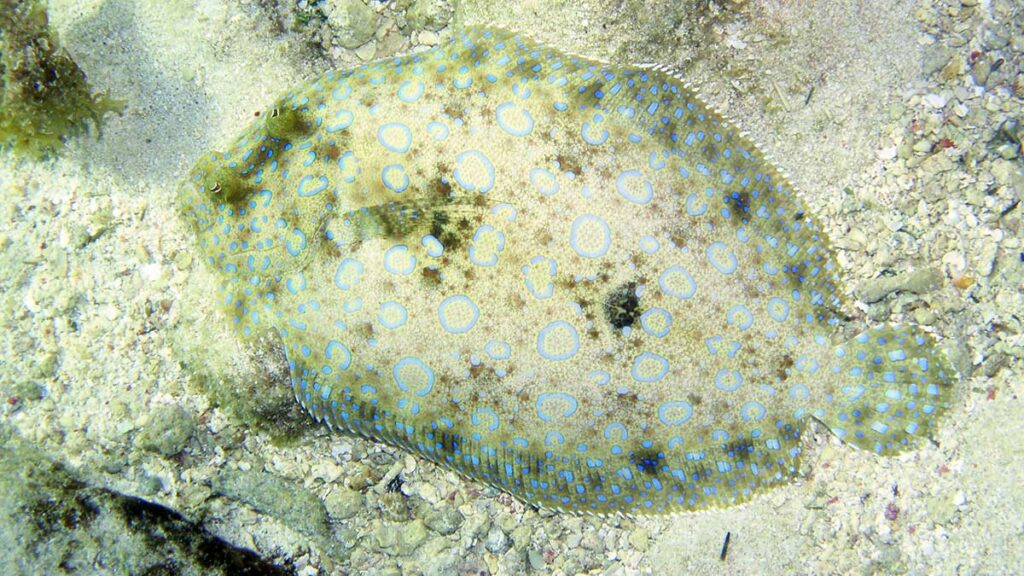
Flounder: “Mr. Johannsen”
The flounder fish, often found on the seabed burrowed just under the sand or mud, is a flat saltwater fish that blends into its surroundings. This intelligent species hides from both prey and predators, and ambushes smaller fish it looks to eat. The older, cranky Mr. Johanson (or Mr. Johannsen) in Finding Nemo lives in the sand near the school.
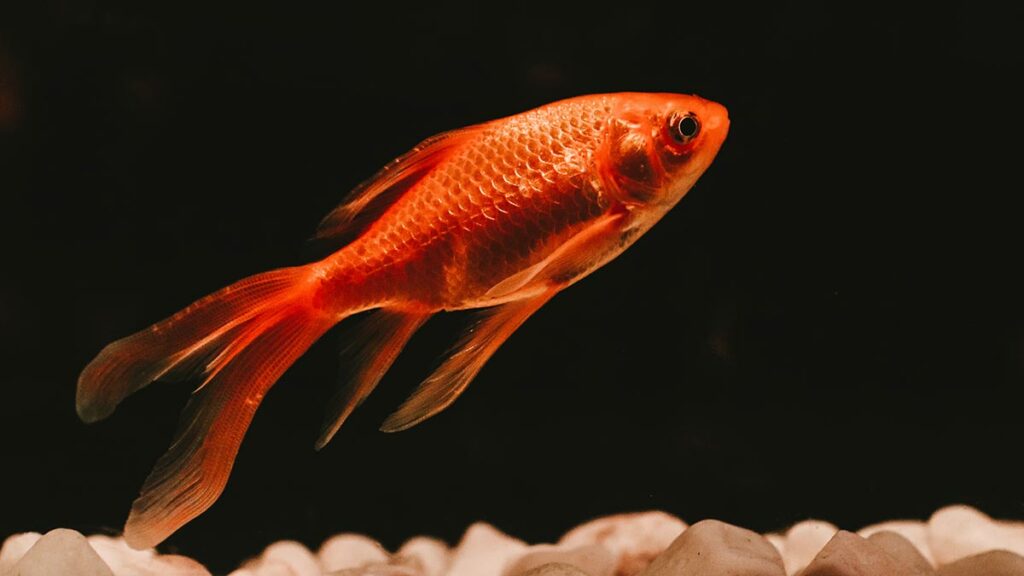
Goldfish: “Chuckles”
Chuckles the goldfish is a very minor character in Finding Nemo. The common goldfish is one of the most common freshwater fish, often kept as a pet in home aquariums. Chuckles is seen in the scene where Darla enters the dentist’s office holding the goldfish, who was floating upside down, in a plastic bag. Movie lore states that Chuckles was in fact faking and “playing dead”.
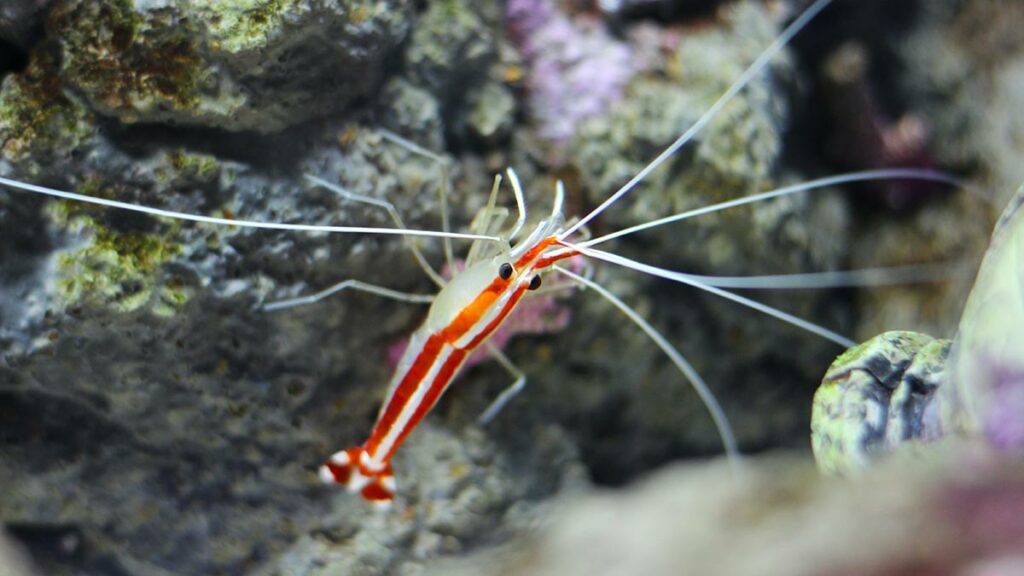
Cleaner Shrimp: “Jacques”
Jacques, who lives in the tank at the dentist’s office in Finding Nemo, is a cleaner shrimp. There are many varieties of cleaner shrimp, which are popular in tank environments because they work to keep the aquarium and its fish clean. They’re harmless and docile decapod crustaceans, but take care to keep them separate from shrimp-eating fish, as they could become prey.
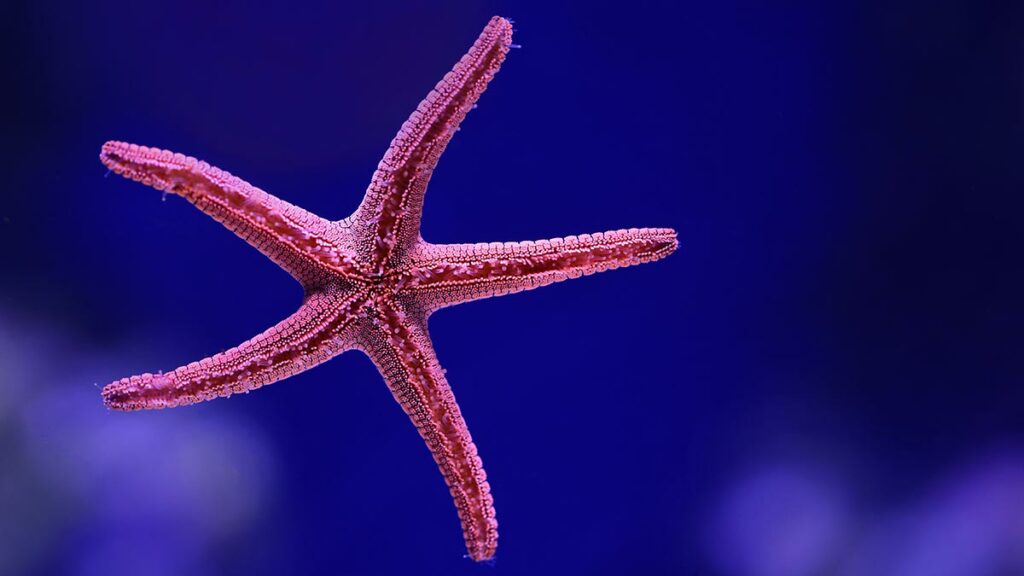
Starfish: “Peach”
Peach the starfish is a main character in Pixar’s Finding Nemo. In the movie, she lives in the tank at the dentist’s office and thanks to its unique shape, is one of the most recognized species of the underwater world. Despite its name, a starfish is not actually a fish — it’s a echinoderm. Starfish are critical to underwater ecosystems and feed on and help regulate populations of shellfish. Incredibly, a starfish can detach a limb if it’s confronted with danger, later regenerating the limb.
Flapjack Octopus: “Pearl”, “Ted”
The father-daughter duo of Ted and Pearl are flapjack octopus. A type of umbrella octopus, the flapjack octopus flattens out on the ocean floor, often resembling an uncooked round pancake. The flapjack octopus consumes worms and other creatures that live on the seafloor, and its gelatinous-style body allows it to hide in plain sight from predators.
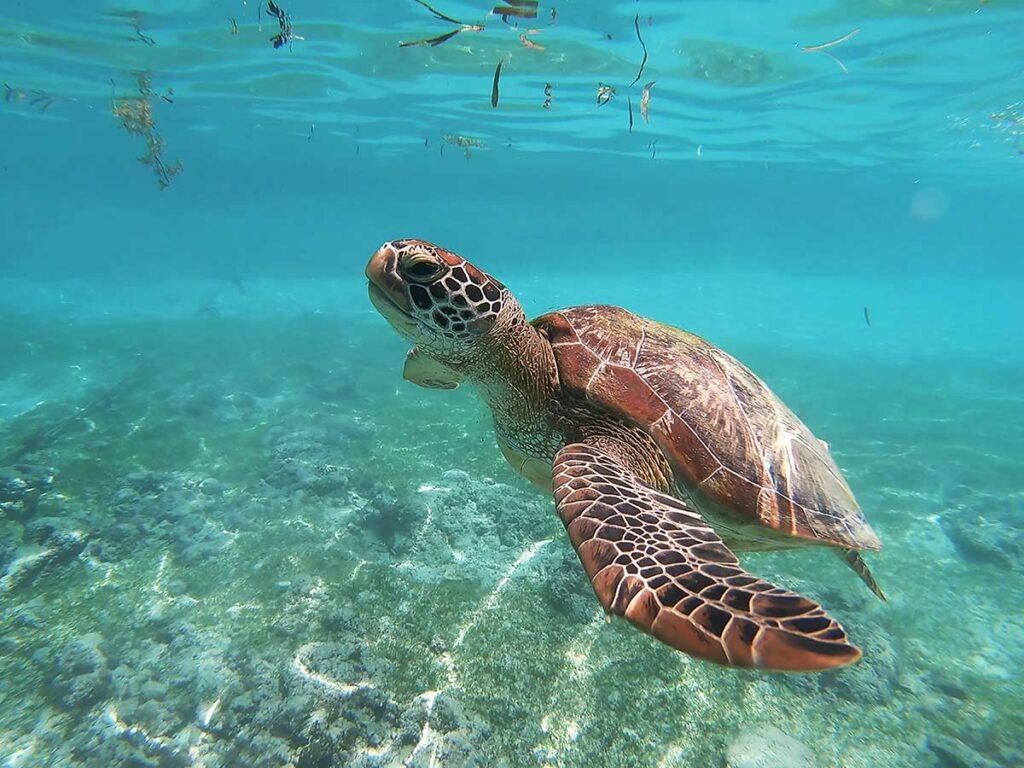
Green Sea Turtle: “Crush”, “Squirt”
Finding Nemo’s Crush and Squirt are green sea turtles. These herbivore hard-shelled sea turtles migrate across long distances to feed and nest their eggs. You see this migration in the film, as Marlin “hitches a ride” with the turtles on the East Australian Current (EAC) to get to Sydney and find Nemo. Green sea turtles are one of the largest sea turtle varieties, growing 3 to 4.5 feet long. They have a round head and short beak and live on a diet of seagrass.
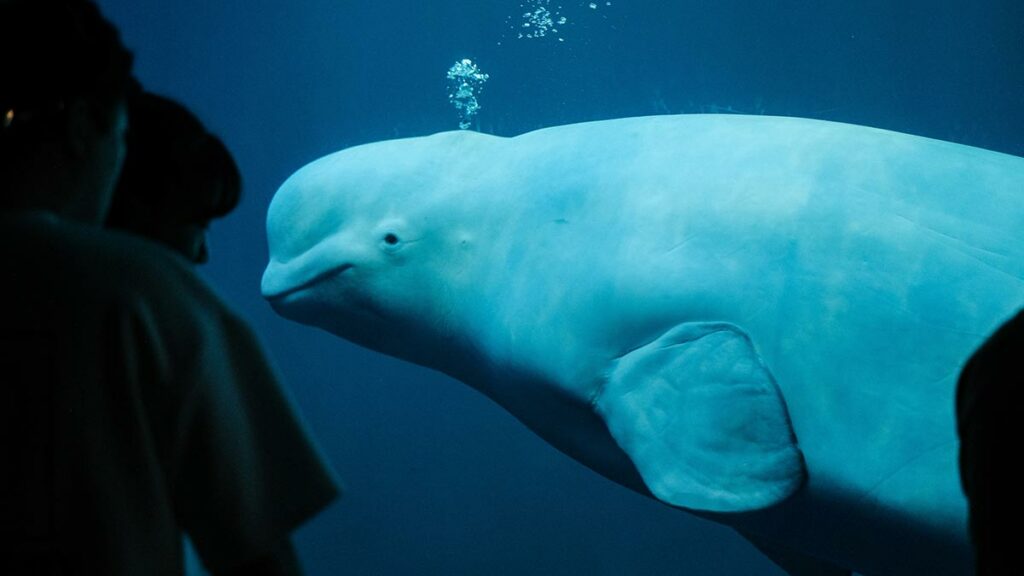
Beluga Whale: “Bailey”
Bailey the Beluga whale is a major character in the sequel, Finding Dory. Beluga whales are also known as the “canaries of the sea” thanks to their ability to communicate using whistles, squeals, and echolocation clicks. These beloved cetaceans are brilliant and intelligent creatures, and feature their signature all-white coloring and bulbous head.
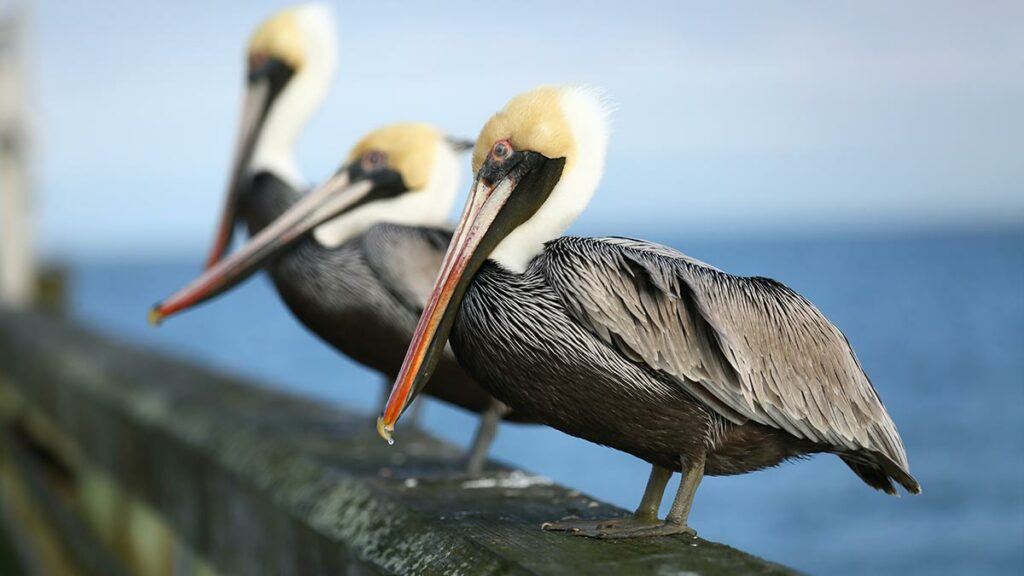
Brown Pelican: “Nigel”, “Gerald”
While not a species of underwater marine life, the brown pelican in Finding Nemo includes the characters Nigel and Gerald. Brown pelicans live in the Americas regions and hunt for small types of fish that swim near the water’s surface by diving sharply into the water and scooping up their prey in their gular pouch (expandable neck).

